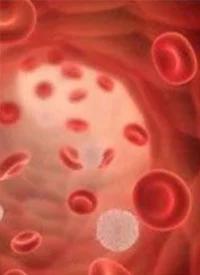Article
FDA Grants Aspacytarabine Fast Track Status for Older Patients With AML
Author(s):
The FDA has granted a fast track designation for aspacytarabine as treatment for acute myeloid leukemia in adults aged 75 years or older who have comorbidities that preclude the utilization of intensive induction chemotherapy.

The FDA has granted a fast track designation for aspacytarabine (BST-236) as treatment for acute myeloid leukemia (AML) in adults aged 75 years or older who have comorbidities that preclude the utilization of intensive induction chemotherapy, according to an announcement from Biosight Ltd.1
“Receiving fast track designation from the FDA is an important recognition of the potential of [aspacytarabine] to address the significant unmet need in the population of patients [with AML] who are medically unfit to receive intensive chemotherapy, and to improve the outcomes for these patients, Ruth Ben Yakur, PhD, chief executive officer of Biosight, stated in a press release.
Aspacytarabine, a novel proprietary anti-metabolite, is comprised of cytarabine covalently bonded to asparagine, acting as a pro-drug of cytarabine, according to the biotechnology company. With its unique kinetics and metabolism, this agent was developed to empower high-dose therapy with lower systemic exposure to free cytarabine and relatively spare normal tissues.
Integrated results from the phase 1/2a and ongoing phase 2b trial showed promising single-agent efficacy and safety with aspacytarabine as a frontline treatment in patients with AML who were unfit for standard treatment, including those with AML secondary to therapy and myelodysplastic syndrome (MDS) with previous exposure to hypomethylating agents (HMAs).2
Patients with newly diagnosed AML who were ineligible for standard therapy, as well as those with relapsed/refractory disease, were enrolled on the phase 1/2a, dose-escalation trial. Participants received 0.3 g/m2 to 0.6 g/m2 of daily aspacytarabine in 6 dose-escalating cohorts.In the ongoing, multicenter phase 2b trial, the subgroup of patients with newly diagnosed AML unfit for standard treatment was expanded to examine the safety and efficacy of the agent as a frontline treatment. Notably, patients with secondary AML who received prior HMA, chemotherapy, or radiotherapy for a prior condition were permitted. In this trial, participants are receiving the selected dose of aspacytarabine, which was 4.5 g/m2 per day, containing approximately 3 g/m2 of daily cytarabine. Each course of aspacytarabine is comprised of six 1-hour intravenous infusions administered on a daily basis.
Integrated data on 34 patients were presented during the 2019 ASH Annual Meeting. Participants were median age of 76 years and received at least 1 dose of aspacytarabine. Thirty of these patients were not eligible to receive standard induction therapy because of either their age or comorbidities.
A total of 25 patients completed 1 treatment course of the agent; 4 patients completed 2 courses, 1 patient completed 3, and 1 patient completed 4. Three patients included on the phase 1/2a trial did not complete the first course of treatment with aspacytarabine.
Results showed that the agent was safe and well tolerated when delivered via repeated course; this held true for patients who were older and those who were unfit for standard therapy. The majority of adverse effects reported with the agent were hematologic in nature and considered to be “on target.” No drug-related mucositis or cerebellar toxicity was observed.
Twenty-one participants had newly diagnosed AML, which was either de novo or secondary to MDS or therapy. Patients were older, with a median age of 76 years; 67% had secondary AML, with 48% of patients receiving previous treatment with either an HMA for a median of 10 courses or radiotherapy. The median baseline bone marrow blast percentage was 75% in this population; 43% had intermediate European LeukemiaNet (ELN) cytogenetic score, while 48% had an adverse ELN score.
Results showed a 30-day mortality rate of only 7% in the patient subgroup who received a 4.5 g/m2 or greater dose of aspacytarabine, despite the poor prognostic characteristics. The combined complete remission (CR) rate of all doses examined was 33%; 1 patient had a CR with partial platelet recovery (CRp).
Moreover, in the subgroup that received at least 4.5 g/m2 of aspacytarabine, the CR rate was 36%, and the median time for complete hematological recovery was 27 days post induction and consolidation. Of the 7 patients who achieved a CR/CRp, 3 patients with secondary AML achieved a CR; this included 2 patients who were previously exposed to an HMA for 5 to 10 treatment courses, and 1 patient who had previously received radiotherapy.
Follow-up regarding duration of response and overall survival is ongoing.
“The compelling safety and efficacy data from both a completed phase 1/2a and ongoing phase 2b studies of [aspacytarabine] may establish it as a new intensive therapy backbone of AML and may, for the first time, allow older adults deemed unfit for standard chemotherapy, to benefit from an intensive treatment,” Yakar added.
In June 2019, aspacytarabine was granted an orphan drug designation from the FDA for the treatment of patients with AML.
References:
- Biosight granted US FDA fast track designation for BST-236 for the treatment of acute myeloid leukemia. News release. Biosight Ltd. August 4, 2020. Accessed August 4, 2020. https://bit.ly/3k8M8Sh.
- Altman JK, Zuckerman T, Frankfurt, O, et al. Aspacytarabine (BST-236) is safe and efficacious as a single-agent, first-line therapy for patients with acute myeloid leukemia unfit for standard chemotherapy. Integrated results from a phase 1/2a and an ongoing phase 2b. Blood. 2019;134(suppl 1):179. doi:10.1182/blood-2019-124330









